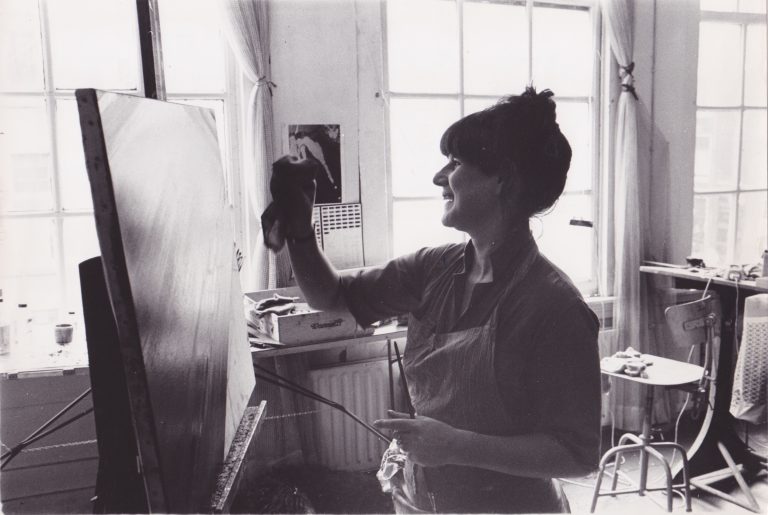Dutch painter Jacqueline de Jong, known for her contributions to figuration in painting and her role in the European avant-garde Situationist movement, died in Amsterdam on Saturday, June 29 at the age of 85. The cause of death was metastatic liver cancer, the artist’s New York-based gallery Ortuzar Projects confirmed.
De Jong was born in 1939 into a Jewish artistic family in Hengelo, the Netherlands, just months before the outbreak of World War II. Fearing the consequences of the German invasion of the Netherlands, the family went into hiding, and Jacqueline and her mother soon fled to Zurich, where they were temporarily separated due to lack of accommodation. After the war, De Jong returned to her homeland in 1946 and struggled to adapt, relearning Dutch. Her interest in the arts, especially acting, was sparked when she was a displaced little girl and solidified during her teenage years.

At 18, De Jong moved to Paris to work at the Christian Dior boutique while studying French and drama. In 1958, she moved to London to study at the She graduated from the Guildhall School of Music and Drama but soon returned to the Netherlands to work part-time at the Stedelijk Museum while teaching herself to paint in her spare time.
While working at the museum, the artist became involved with the Dutch faction of the Situationist International, and soon held a senior position. The Situationist International was an anti-capitalist avant-garde movement of artists, writers and political theorists that dominated Europe from 1957 until its disbandment in 1972. A conflict with the group’s leader, Guy Debord, led to de Jong’s formal withdrawal from the movement, which in turn enabled her to create her own monographic publication, The Situationist International. The Situationist Era. De Jong edited, designed and published six editions of the magazine He collaborated with various contributors to distribute revolutionary literature and printed posters in Paris during the May 1968 protests.
Throughout her work with the Situationists, de Jong also continued to make art that she integrated into her activism. As abstraction took hold around the world in the 1960s, she became increasingly interested in creating figurative works, creating an awkward, naive, semi-expressionist style. and part cartoon style, which strips away any notion of humor and politeness to expose the raw wounds, absurdity, and eroticism of the human condition.In addition to modern art collected by her parents, she was heavily influenced by Max Beckmann, Rembrandt, Hercules Seghers, Nicolas de Staël, and the Dada movement.

De Jong’s radical artistic practice is provocative, outspoken, political and overtly feminist, and has been admired primarily in the Netherlands, especially for her An accidental painting and Suicide Painting series. However, in recent years, admiration for the artist has spread across Europe and North America. In 2018, Les Abattoirs in Toulouse, France, hosted a major exhibition that displayed her historical works from the 1960s, including her 1968 May Storm poster, juxtaposed with her more recent works and related memorabilia.
De Jong’s latest works, which are on view in her solo exhibition, feature a selection of contemporary violence in Ukraine and Gaza, rooted in her childhood displacement and her early adulthood activism. Little Death It will be on view at the Pippy Houldsworth Gallery in London until July 13. Ortuzar Projects also confirmed that de Jong’s first exhibition in the United States will be held this year at the Nova Southeastern University Art Museum in Fort Lauderdale, Florida.

